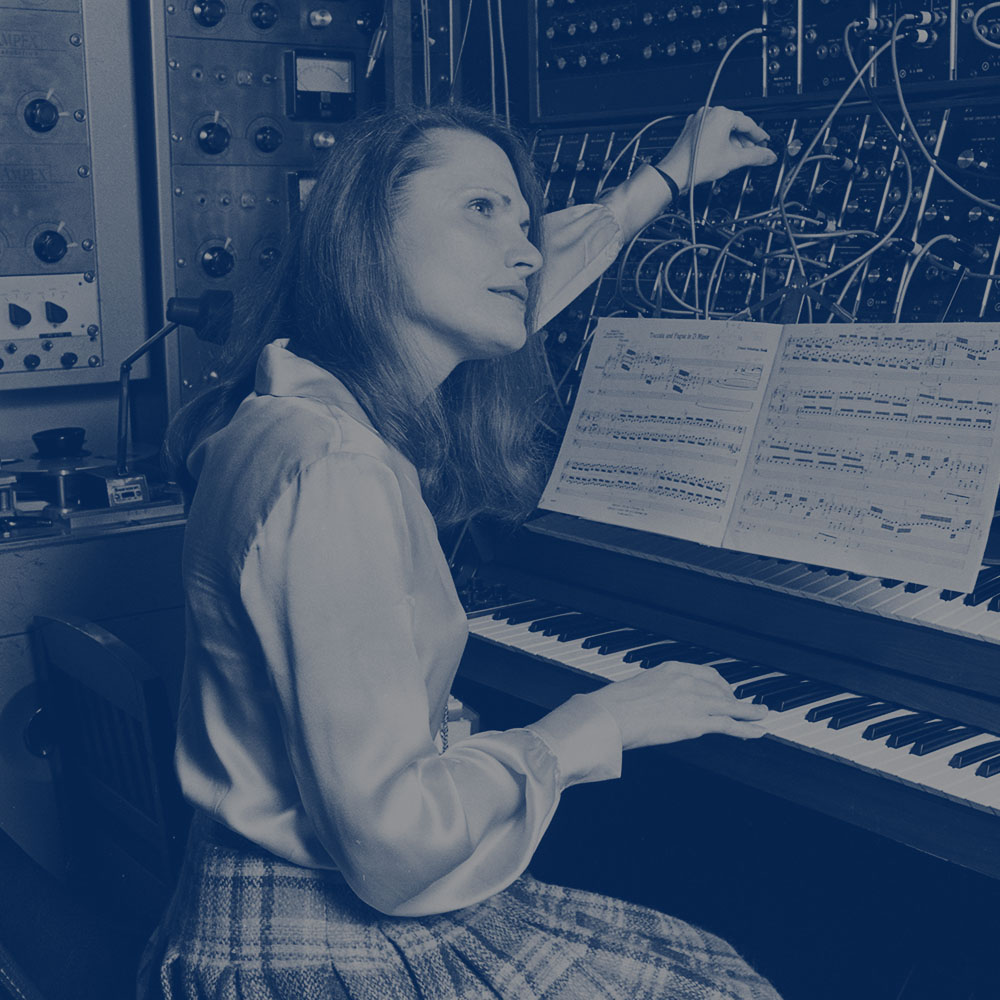

WENDY CARLOS
EPISODE 9
Electronic music composer Wendy Carlos could be argued as the defining woman of electronic music in the ‘60s and ’70s, creating a number of groundbreaking albums, adaptations, and movie scores. She first gained recognition for her Switched-On Bach album, an entirely-electronic recreation of music by J.S. Bach using a Moog synthesizer. The album became the first ever platinum-selling classical album, as well as the most influential “electronic” classical recording of all time, smashing the borders between classical and synthesized music. She is also well known for her soundtrack work, including such films as The Shining, A Clockwork Orange, and Tron. This episode of Sound Portraits Radio is hosted by Doron Sadja.
“In my entire lifetime I’d only seen a very few people who took so naturally to an instrument as (she) did to the synthesizer. It was just a God-given gift.”
Bob Moog
“When we started S-OB my goal was to demonstrate that I could make “real” music with Bob Moog’s marvelous new synthesizer. Then I could “get on” creating my own music with it. This modest idea was the reason for selecting a respected, well-known repertoire for the project, “Bach’s Greatest Hits,” in fact. His music was ideal in several ways, as we’ve said before: it was contrapuntal (not chords but musical lines, like the Moog produced), it used clean, Baroque lines, not demanding great “expressivo” (a weakness in the Moog at the time), and it was neutral as to orchestration (Bach freely used many variations on what instruments played what).”
Wendy Carlos
“No longer was it necessary to “prove” that the synthesizer was a musical instrument. S-OB had done that far better than we ever dreamt. But we did want to show other sides of the electronic media, at least as far as the repertoire permitted. I got my personal creative fun from new arrangements, inventive ways to use click tracks and other clever tricks and tools, and the pointillistic “hocketing” invented for the Scarlatti Sonatas. That worked out splendidly in stereo, and these quite intricate sound weavings are considered among the album’s favorite tracks.”
Wendy Carlos
“For those of you who are fascinated by microtonality (for lack of a more precise word), thank you. So am I. Now that Classical music has pulled itself off from the precipice with the absurdities of dodecaphony/serial and other ‘deliberately ugly music’ methods, there’s no clear path to the next great discoveries in music. I believe electronic instruments will play a major role. After all, we’re no longer the ‘have-nots’, looking in from the cold through the ice-streaked market window at the Christmas geese and veggies, like a scene out of Dickens. No, indeed, the arrow of where music’s going is now in our court. And I sure intend that we not fumble that ball, to mix metaphors…! Those who continue the ‘museum’ of the traditional orchestra and chamber ensembles are doing just that, preserving a past world for posterity. And that’s a noble, important activity, don’t smile. But it just happens not to be on the path to the future… So, where to go? One very easy answer is provided by the simple gesture of discarding the 12-tone Equal Tempered scale…. there are so many other interesting worlds of scale and tuning to try out. And they’re rather easy to try, not a lot of backbreaking work, as it once was for pioneers from Bosanquet through Partch. The main credential seems only to be a sense of curiosity and adventure.“
Wendy Carlos
Sound Portraits is a series of lectures/listening sessions, curated by Doron Sadja, focusing on the work of iconic composers who have paved the way for contemporary electronic music. Started in 2015 as a live event at Spektrum in Berlin, the series quickly grew and exists now as both a live lecture series and a radio show on Cashmere Radio. After an introduction of each artist’s life and work, we listen to a selection of excerpts and complete works from the artist’s repertoire. Besides providing an opportunity to introduce these seminal artists to a new audience, the Sound Portraits series also offers an open forum to engage in group listening in a quiet atmosphere.
Doron Sadja is an American artist, composer, and curator whose work explores modes of perception and the experience of sound, light, and space. Find out more at www.doron.sadja.com
Contact us at info@soundportraits.info